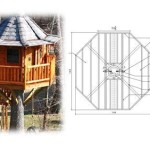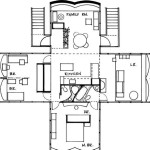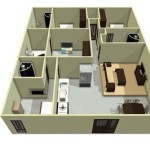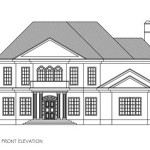Open Source Tiny Home Plans: A Path to Affordable and Sustainable Living
The tiny home movement has gained considerable momentum in recent years, fueled by desires for financial freedom, minimalist lifestyles, and reduced environmental impact. While the concept is appealing, the initial investment can be a barrier for some. Open source tiny home plans offer a viable alternative, providing access to designs, construction techniques, and community support that can significantly lower the cost and complexity of building a tiny home.
Open source, in essence, means the design plans are freely available for anyone to use, modify, and distribute. This collaborative approach fosters innovation and allows individuals to tailor the plans to their specific needs and preferences. Unlike proprietary designs, open source plans usually come with fewer restrictions, encouraging customization and adaptation to local building codes and available materials.
This article will explore the advantages of open source tiny home plans, delve into the resources available for finding them, and provide insight into the considerations necessary for successful implementation. The aim is to equip individuals with the knowledge needed to determine if open source is a suitable pathway towards creating their own tiny living space.
The Benefits of Open Source Tiny Home Plans
Choosing open source tiny home plans presents several distinct advantages over commercially available alternatives. These advantages span across financial, practical, and community-oriented aspects.
One of the most significant benefits is cost reduction. Access to free plans eliminates the expense of purchasing a design, which can be substantial. This allows builders to allocate more resources to materials and construction. Furthermore, the open nature of the plans often leads to the sharing of cost-saving tips and techniques from other builders, further minimizing expenses.
Another key advantage lies in the adaptability and customization possibilities. Open source plans are not static; they can be modified to suit individual requirements, local building codes, and aesthetic preferences. This flexibility is particularly valuable for individuals with unique needs or those building in areas with specific regulatory constraints. The ability to adapt the plans ensures the final product aligns perfectly with the builder's vision and circumstances.
The open source community provides a valuable network of support. Builders can connect with others who have used the same plans, ask questions, share experiences, and troubleshoot challenges. This collaborative environment fosters a sense of camaraderie and provides access to a wealth of knowledge and practical advice. The community aspect can be particularly beneficial for first-time builders who may lack experience in construction.
Beyond the immediate benefits to the individual builder, open source plans contribute to a broader movement towards sustainable and affordable housing. By making designs freely available, they democratize access to tiny home construction, empowering individuals to create their own housing solutions. This can have a significant impact on addressing housing affordability challenges and promoting more environmentally responsible building practices.
Finding and Evaluating Open Source Tiny Home Plans
Numerous online platforms and communities offer open source tiny home plans. However, it's crucial to carefully evaluate the plans before committing to a specific design. The quality and completeness of the plans can vary significantly, so due diligence is essential.
Websites dedicated to open source projects, such as Instructables and Thingiverse, often feature tiny home plans. These platforms allow individuals to upload and share their designs, offering a diverse range of options. Other resources include online forums and communities dedicated to tiny homes, where users may share plans and discuss construction techniques. Searching specifically for "open source tiny home plans" on major search engines can also yield valuable results.
When evaluating a plan, several factors should be considered. Firstly, assess the completeness of the plan. Does it include detailed drawings, material lists, and step-by-step instructions? A comprehensive plan will minimize confusion and reduce the likelihood of encountering unforeseen challenges during construction. Incomplete or poorly documented plans can lead to errors, delays, and increased costs.
Secondly, verify the accuracy of the plan. Look for indications that the plan has been reviewed or tested by other builders. Check for feedback or comments from users who have attempted to build the design. Errors in the plan can result in structural problems or code violations, so it's crucial to ensure the accuracy and reliability of the design.
Thirdly, consider the suitability of the plan for your skill level and resources. Some plans are designed for experienced builders with access to specialized tools and equipment, while others are geared towards beginners with limited resources. Choose a plan that aligns with your level of expertise and the resources available to you. Attempting to build a complex design without the necessary skills or tools can be frustrating and potentially dangerous.
Finally, ensure the plan complies with local building codes and regulations. Building codes vary significantly from region to region, so it's essential to verify that the plan meets the specific requirements of your location. Consult with local building officials or a qualified architect to ensure compliance. Failure to comply with building codes can result in fines, delays, or even the need to dismantle the structure.
Key Considerations for Implementing Open Source Tiny Home Plans
Successfully implementing open source tiny home plans requires careful planning, preparation, and a realistic assessment of one's capabilities and resources. While the plans themselves are free, the construction process still involves significant time, effort, and expense.
One of the primary considerations is obtaining the necessary permits and approvals. Building codes and regulations vary significantly, and it's essential to comply with all applicable requirements. Contact local building officials early in the process to determine the permitting requirements for tiny homes in your area. Be prepared to provide detailed plans and documentation to demonstrate compliance with building codes.
Another important consideration is securing a suitable building site. The location of the tiny home will impact various aspects of the construction process, including access to utilities, soil conditions, and zoning regulations. Choose a site that is accessible, stable, and compliant with local zoning ordinances. Consider factors such as proximity to water and sewer lines, electricity access, and potential environmental impacts.
Accurately estimating the cost of materials and labor is crucial for budgeting purposes. While open source plans can reduce design costs, the cost of materials and labor can still be substantial. Obtain quotes from multiple suppliers and contractors to ensure you are getting the best possible prices. Be realistic about your own capabilities and be prepared to hire professionals for tasks you are not comfortable performing. Failure to accurately estimate costs can lead to budget overruns and delays.
Effective project management is essential for keeping the construction on track and within budget. Create a detailed timeline and track progress regularly. Break down the project into smaller, manageable tasks and assign responsibilities accordingly. Be prepared to adapt to unforeseen challenges and adjust the timeline as needed. Clear communication and collaboration are essential for ensuring the project is completed successfully.
Finally, prioritize safety throughout the construction process. Building a tiny home can be a physically demanding and potentially dangerous activity. Wear appropriate safety gear, such as gloves, eye protection, and a hard hat. Follow safety guidelines and best practices for all construction tasks. Be aware of potential hazards and take steps to mitigate risks. If you are unsure about how to perform a particular task safely, seek guidance from a qualified professional.
By carefully considering these factors and taking a proactive approach to planning and preparation, individuals can successfully utilize open source tiny home plans to create affordable, sustainable, and personalized living spaces. The accessibility of these plans, coupled with the support of online communities, empowers individuals to take control of their housing options and embrace a simpler, more fulfilling lifestyle.

Aug 19 2024 Open Source Tiny Homes The Greeny Flat Experience

27 Adorable Free Tiny House Floor Plans Craft Mart
:max_bytes(150000):strip_icc()/ana-tiny-house-58f8eb933df78ca1597b7980.jpg?strip=all)
4 Free Diy Plans For Building A Tiny House

27 Adorable Free Tiny House Floor Plans Craft Mart

The Small House Project Tiny Blog

Tiny House Floor Plans 32 Home On Wheels Design

Design For A Low Cost Home By Studiolada As Open Source Stylepark Small House Plans Tiny Floor

27 Adorable Free Tiny House Floor Plans Craft Mart

Small Home Design Live 3d

Four Bedroom Tiny Houses To Inspire Your Design The Life








